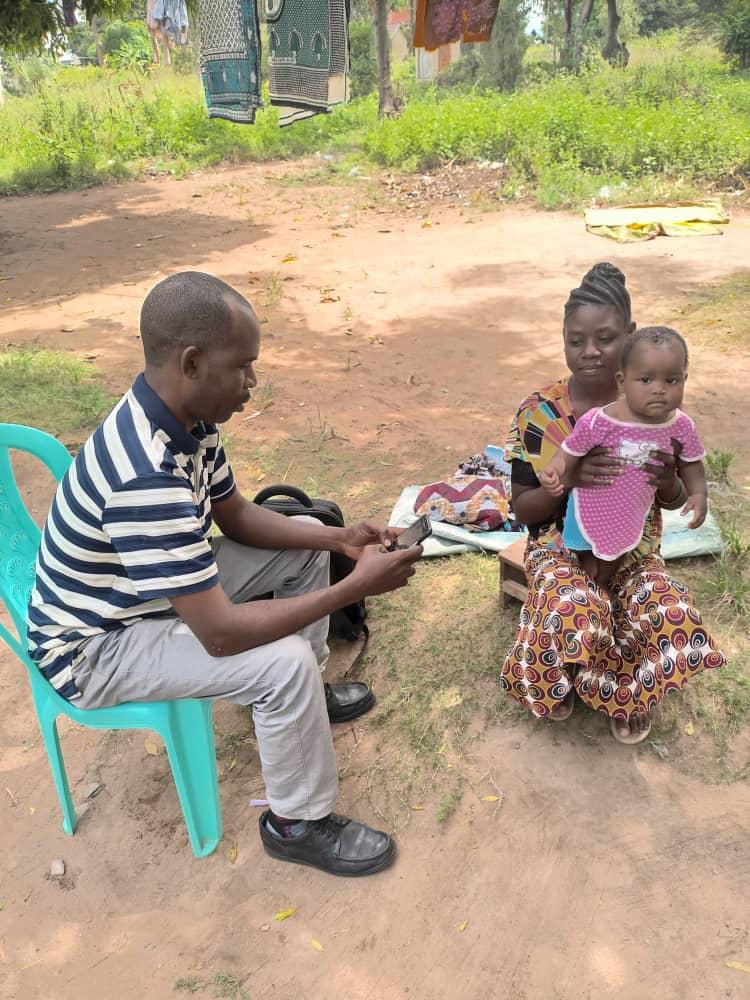Mwanza’s Polio Puzzle: Piecing Together Community Insights for a Virus-Free Future

When vaccine-derived poliovirus was detected in Mwanza’s environment, health partners mobilized fast—not just to vaccinate, but to listen. A rapid social diagnostics study helped uncover both strengths and gaps: high vaccine coverage and trust in health workers, but persistent myths, hygiene risks, and vulnerable groups. Now, insights from this study are guiding smarter, more integrated risk communication and WASH efforts across the region.
Following the environmental detection of vaccine-derived poliovirus type 2 (cVDPV2) in Mwanza City, Tanzania, a social diagnostic study was conducted in April 2025 to assess polio vaccination coverage, community knowledge, attitudes, and practices. This study, a collaboration between the Ministry of Health, UNICEF, Tanzania Inter-faith Partnership (TIP), and Muhimbili University of Health and Allied Sciences (MUHAS), aimed to identify factors contributing to missed vaccinations and inform targeted Risk Communication and Community Engagement (RCCE) interventions. The findings reveal high vaccination coverage alongside critical gaps in knowledge and hygiene practices, highlighting the need for integrated strategies to achieve lasting polio eradication.
Introduction
Poliomyelitis remains a global health threat, particularly in regions with inadequate sanitation and immunization coverage. While global efforts have drastically reduced wild poliovirus, the emergence of circulating vaccine-derived poliovirus (cVDPV) poses a significant challenge. The detection of cVDPV2 in Mwanza, despite the absence of reported paralytic cases, prompted this investigation into the social, behavioral, and cultural factors influencing polio vaccination within the community. This study sought to understand community perceptions, identify vulnerable populations, and evaluate the effectiveness of current RCCE efforts.
Methods
The study used a mixed-methods approach, combining quantitative household surveys with qualitative interviews. Quantitative data was collected from 508 caregivers in Nyamagana and Ilemela Municipal Councils using KoboCollect. The survey explored demographics, vaccination history, trusted sources of information, health-seeking behaviors, and WASH practices. Qualitative data came from interviews with district-level health officials, religious leaders, and community representatives. Quantitative data was analyzed using SPSS; qualitative data was thematically coded.
Results
Quantitative Findings
- High Vaccination Coverage: 98.6% of children received at least one OPV dose; 77% received all four recommended doses.
- Trust in Health Workers: Health professionals and Community Health Workers (CHWs) were the most trusted sources of vaccine information.
- Confidence in Government: 93.9% of caregivers expressed satisfaction with the government’s polio vaccination efforts.
- Knowledge Gaps: 50.2% of respondents believed polio is caused by a lack of vaccination; 31.3% did not know the actual cause.
- WASH Challenges: Although 89.6% had piped water access, only 40% had handwashing stations and just 18.9% consistently used soap.
Qualitative Findings
- No Reported AFP Cases: Though no paralytic cases were reported, environmental detection confirmed presence of poliovirus.
- Identified Risk Factors: Poor sanitation, water contamination, and the movement of populations from OPV2-using areas.
- Vulnerable Groups: Cross-border traders, informal food vendors, and schoolchildren.
- CHWs’ Crucial Role: CHWs were essential in tracing missed children, correcting misinformation, and increasing campaign acceptance.
- Persistent Myths: Misconceptions around infertility and vaccine safety remain prevalent in some areas.
Discussion
The study reinforces Mwanza’s strong polio vaccination system, yet highlights that immunity alone is not enough. Poor hygiene, persistent myths, and at-risk groups can open doors to outbreaks. CHWs are the program’s backbone—deeply trusted and essential for both education and outreach. Continued investment in CHW training, coupled with RCCE strategies and WASH integration, is critical for closing remaining gaps.
Conclusion
Mwanza’s experience is a reminder that eradication requires more than vaccines—it requires trust, education, and infrastructure. To move toward a polio-free future, Tanzania must continue strengthening RCCE, reinforcing WASH practices, supporting CHWs, and ensuring every vulnerable group is reached.
Recommendations
- Strengthen Health Education: Develop campaigns addressing misconceptions and improving understanding of polio transmission.
- Support CHWs: Provide better training, materials, and financial support.
- Integrate WASH: Improve sanitation, promote soap use, and ensure clean water access alongside vaccination drives.
- Improve Surveillance: Continue environmental testing and community-based reporting.
- Target Vulnerable Groups: Ensure mobile and high-risk populations are included in all campaign phases.

